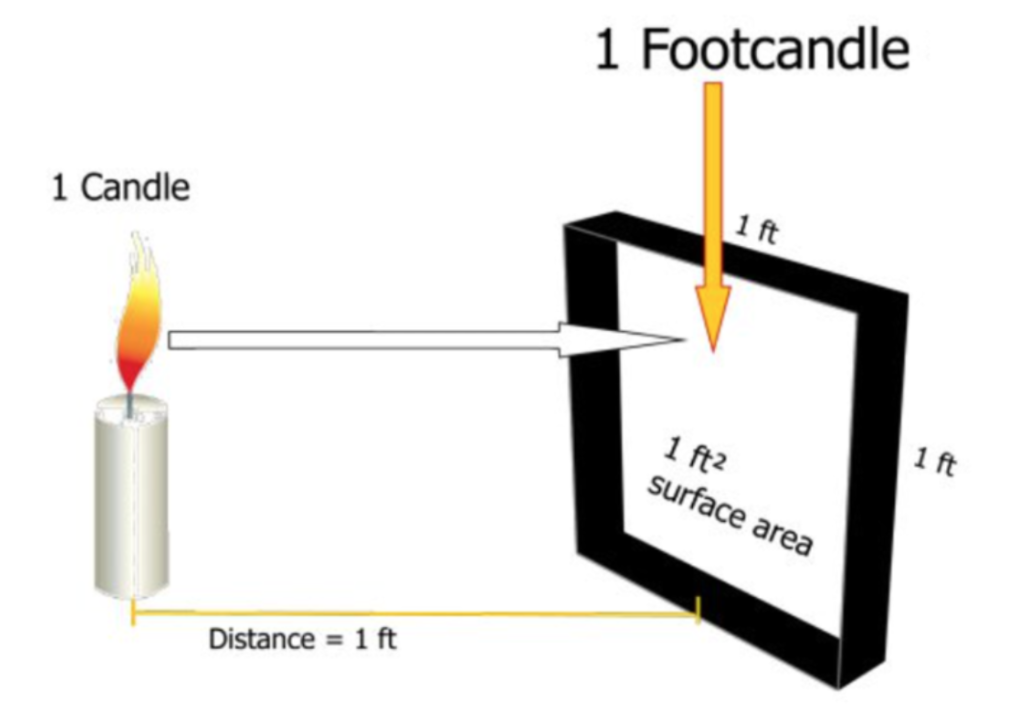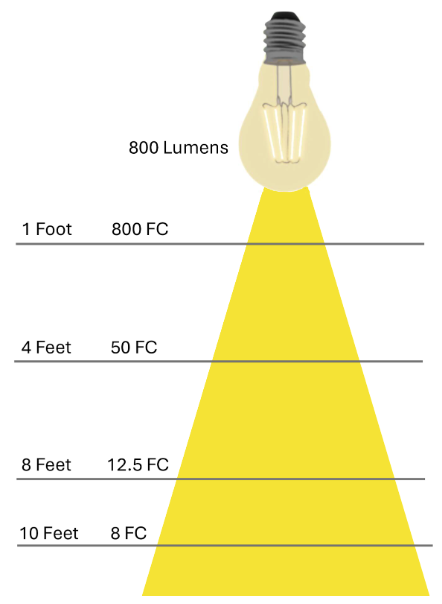The Design Brief® | Volume VIII | How to Calculate the Quantity of Light Needed in a Space
©️ Dakota Design Company 2017-2025 | All rights reserved. This content may not be reproduced, distributed, or used without permission.
WRITTEN BY DR. GLORIA for DAKOTA DESIGN COMPANY
Often—when specifying lighting fixtures for a space or designing a lighting scheme for a new construction project—interior designers select and locate fixtures based on a best guess approach. This often results in success because one bulb can be swapped out for another with more or less intensity fairly easily, OR dimmers can be used to adjust the light intensity to what works best. This latter approach—relying on dimmers to tweak the lighting intensity—is particularly useful, as the residential building codes and energy codes now require dimmers in residential new construction and renovation projects.
Pro Tip: The 2024 edition of the International Residential Code, Section 1104.2.1 requires that all permanently installed luminaires (light fixtures) in habitable rooms (which excludes closets and hallways) be controlled with a manual dimmer or automatic shutoff control (motion sensor). Not all jurisdictions may be enforcing this requirement, but wherever dimmers are used, there is great latitude to control light levels. Need a codes refresh? Check out our codes handbook here.
The rationale behind dimmer and sensor mandates is not to accommodate inaccurate lighting level calculations. It is rather to reduce energy consumption when lighting levels are too bright, or when lights are left on in rooms that are not occupied.
Is There a Formula to Compute Appropriate Lighting Intensity?
Lighting designers have the capability to do complex calculations to arrive at ideal light intensity for designed spaces. These complex computations consider the distance from the light source, the amount of intensity loss that LED bulbs (lamps) experience over time (called light loss factor), fixture orientation, the efficacy of light sources to direct light, and how well surfaces receive light through reflectance or absorption. Designers can also use computer programs that do advanced calculations of light levels at points throughout a space. These methods are typically more complicated than what is needed to effectively light residential spaces.
But there IS a fairly simple calculation method to help designers determine the quantity and intensity of light sources needed in a space. It relies on basic and understandable arithmetic.
First, let’s review some lighting terminology:
Lighting Terminology for Interior Designers
WATTAGE: Wattage is the measurement of how much electricity is consumed to power a lamp (aka light bulb). With LED light sources, wattage is no longer a meaningful metric for lighting intensity, as all LED light sources use less wattage than older incandescent or fluorescent lamps.
LUMENS: Lumens communicate the amount of visible light emitted from a light source. This is the thing we really need to determine when producing a lighting scheme—How many lumens are needed, and how many light fixtures (luminaires) do we need to appropriately light a space?
FOOT-CANDLES: The science of lighting began a few hundred years ago when the main source of light came from candles. One foot-candle is the amount of light striking a one-foot square surface that is placed one foot away from a candle.
The distinction between lumens and foot-candles is important. Both are used to define light intensity, but they differ.
Lumens is the light output of a light source.
Foot-candles is the amount of light that reaches a surface.
Fortunately, foot-candle recommendations are provided to us—more on that below.
With lighting sources—bulbs (called lamps) or fixtures (called luminaires)—key information is provided on the label or cut sheet about the light source itself, shown for a bulb (below left) or a fixture (below right).
Notice that the brightness emitted is expressed in lumens.
The label above for a bulb indicates 800 lumens, and the sconce spec indicates 466 lumens. That is a measurement of the amount of light that these two light sources emit. For more information on color temperature (light appearance) or CRI (color rendering index), see this previous edition of The Design Brief®️.
ILLUMINANCE / ILLUMINATION: This is another important factor to consider. Illuminance is the amount of light falling on a surface, measured in either footcandles (fc), or the metric equivalent, lux (lx). The “surface” that light falls upon in our spaces includes counters, floors, walls, and ceilings, but it can also include an imaginary plane about 30” above the floor, which is the area within our sightlines that needs to be illuminated - for example, a writing table. Illuminance is a key concept in that it allows for recommended light levels in our spaces.
Illumination recommendations—for ambient or task lighting—provide the quantity of light needed to fall on the surfaces in our spaces in order to provide the correct amount of light for optimal functioning.
For instance, the recommended illumination level for an office is 40 foot-candles. That is the amount of illumination needed throughout the space and hitting the work surface for someone to perform efficiently in that office. So, if you were designing that space, you would need to determine how many lumens (from the light sources in the room) would be needed to create 40 fc of light throughout the space and on the work surface.
Illumination recommendations are not provided in lumens, because the size of the space is a consideration. In a closet, 200 lumens may provide an adequate amount of lighting. But 200 lumens is certainly not sufficient to light a large living room.
So, we must convert the foot-candle illumination recommendations (how much light is needed to reach the surfaces in our rooms) to lumens in order to select the light fixtures and determine the total number of fixtures needed to produce those illumination recommendations.
The Simple Lumen Method Calculation
That is where we use what is called the Simple Lumen Method for lighting quantity calculations. The formula goes like this:
Area of space (in square feet) x Illuminance recommendation (in FC) = Lumens needed
We calculate the square footage of a space by multiplying the length of a room by the width of a room. Illumination recommendations (illuminance) are provided to us in the quantity of foot-candles needed to reach surfaces in the rooms we use. More about that later.
So, with a few pieces of information, we can easily compute the quantity of lumens needed to light a space.
In addition to using this simple formula, it is appropriate to consider that all LED light sources lose intensity over time. The amount of light emitted is depreciated over the lifespan of the light source. How much intensity is lost will vary with the passage of time, but estimating a 15% loss provides a reasonable approximation. This is called Light Loss Factor (LLF) and is not figured into the equation.
There are several other factors that this simple calculation method ignores:
Daylight coming in through windows, which adds an abundance of light during daytime hours
Irregularly shaped rooms that might produce dark corners
Dark wall or ceiling colors that might absorb light
Shiny surfaces that reflect light
Age of the users of the space—people over the age of 65 require higher levels of illumination than younger people.
But even with these shortcomings, this formula is quite helpful.
Illumination Recommendations from The Illuminating Engineering Society
The Illuminating Engineering Society of North America (IESNA) provides guidance for illumination levels, depending on activity. In general, they recommend:
5 footcandles for general illumination in circulation and social spaces
10 footcandles in working spaces where simple tasks are performed
30-50 foot-candles for tasks that require higher levels of visual perception
The chart below provides good room-by-room illumination guidelines.
Now, let’s look at putting the Simple Lumen Method formula to use.
Say you are computing the ambient light level needed for a bedroom. The bedroom is 14’ x 15’, or 210 square feet. There will be one ceiling fixture in the middle of the room. The recommended illumination level from the chart above is 5 footcandles. Applying the formula gives us the required quantity of lumens:
Area of space (210) x Illuminance recommendation (5) = Lumens needed (1050)
Say you have chosen this ceiling fixture, which emits 550 lumens.
That will not be sufficient, as 1050 lumens are needed, so you also plan two nightside table lamps that will contribute ambient light to the room, as well as adding task lighting for reading. Each table lamp will have an LED bulb that emits 400 lumens.
The total lumens in the room will be:
550 lm (ceiling fixture) + 400 + 400 (bulbs in two lamps) = 1350 lm
Let’s add the calculation for light loss factor. Remember that to account for LED light depreciation over time, we are going to subtract 15% of the initial illumination level.
1350 lm x .85 (LLF) = 1147.5 lm
You will have almost 1150 lm in a room that needs 1050 lm. That is good!!
That is a very appropriate amount of light in a space where the formula provides a needed illumination level of 1050 lm.
Consider also that the table lamps on the night stands will provide the task lighting for reading. To compute the quantity of light falling on a book about three feet away from the light source, we have to consider another formula. This gets a bit more complicated.
The level of footcandles falling on a surface is directly affected by the distance from the light source. The further away the surface being lit, the lower the footcandle level that will reach it. At one foot, an 800 lumen light source will create 800 footcandles on a surface. But at 4 feet, the footcandle level will be only 50.
Footcandles are directly affected by the distance from the source of lumens and is expressed by this formula:
So, if a book is three feet from the light source that emits 400 fc, the calculation will be:
400 lm ÷ 9 (nine is 3’ squared) = 44 fc
Since the suggested illumination level for bedroom reading is 40 fc, this is an appropriate quantity of light.
Let’s look at another example applying the Simple Lumen Method formula:
A kitchen is 12’ x 11’, or 132 sf. The recommended illumination for kitchen ambient light is 10 fc.
Area of space (132) x Illuminance recommendation (10) = Lumens needed (1320)
You are going to use six recessed cans to provide ambient light to the kitchen. Each emits 600 lumens. Additionally, you are adding two pendant lights over the island. Each provides 500 lumens. The ambient light in the kitchen (in lumens) will be:
6 x 600 lm (recessed cans) + 500 + 500 (hanging pendants) = 4600 lm
This kitchen will be overlit, even when accounting for the 15% light loss factor:
4600 lm x .85 = 3910 lm
That is almost three times the lumens needed. That is okay. You know that the recessed cans will provide good distribution of light across the room, and the two island pendants are decorative. You just make sure to include dimmer switches for all of these light sources, and the light levels can be easily adjusted.
But let’s look at the undercabinet lighting in the same kitchen. Although this will add a bit to the ambient levels, the main purpose of the under-cabinet lighting is task. You will want to put a good deal of lighting on the countertop.
The countertop is 2’ deep and 6’ long, or 12 sf. An illumination level of 50 fc is needed on the countertop for task lighting in the kitchen.
Area of space (12) x Illuminance recommendation (50) = Lumens needed (600)
You find an under cabinet light that is 18” long and produces 400 lm. If you use four of those end-to-end under the cabinets, that will produce 1600 lm (4 x 400 lm = 1600 lm). Accounting for the 15% light loss factor, you will have:
1600 lm x .85 = 1,360 lm
Since the light source will be 18” away from the countertop, we are going to apply the distance formula we used for the bedroom nightstand lamps.
1,360 lm ÷ 2.25 (18” squared) = 600 fc
Additionally, some of the ambient lighting in the room will hit the countertops. That will give you the appropriate amount of light on the countertops!!!
Although a much deeper analysis could be done—accounting for more factors that impact light distribution—this Simple Lumen Method formula provides an excellent tool for residential interior designers in selecting lighting fixtures.
Sources:
Gordon, G. (2015). Interior lighting for designers, 5th ed., Wiley.
Illuminating Engineering Society of North America. (2000). The IESNA lighting handbook (9th ed.).
Karlen, M., Spangler, C., & Benya, J. R. (2017). Lighting design basics, 3rd ed., Wiley.
MEP Academy (2024, June 24). Lumens and footcandles. https://mepacademy.com/lumens-and-footcandles/
Want to explore more issues? Here are a few favorite past editions:
Want The Design Brief® delivered straight to your inbox?
If you liked this email, be sure to sign up for The Design Brief®, our complimentary publication that gives you bite-sized lessons on all the technical interior design topics you didn’t learn (or forgot) from design school—straight from our resident interior design professor!
Looking for more? Keep reading:



















